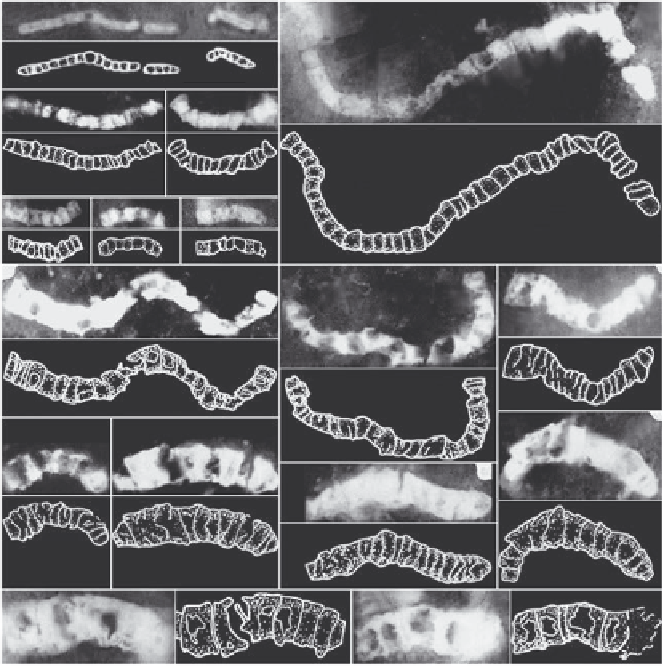Geoscience Reference
In-Depth Information
a
1
a
2
g
1
5 μm
b
1
c
1
g
2
c
2
5 μm
5 μm
e
1
f
1
d
1
10 μm
e
2
5 μm
f
2
d
2
5 μm
5 μm
j
1
h
1
i
1
10 μm
10 μm
j
n
1
h
2
10 μm
k
1
l
1
i
2
m
1
n
2
m
2
10 μm
10 μm
10 μm
k
2
l
2
10 μm
p
1
p
2
o
1
o
2
10 μm
10 μm
Figure 6.4. Fossils of the Apex Chert. From schopf and kudryavtsev (2012). reproduced
with permission.
One is that these fossils are not well preserved, and convincing cyano-
bacterial traits, other than size, were not observed.
12
Another issue, also
known at the time, was that some noncyanobacterial organisms pro-
duce filaments of similar size and shape to those of the Apex Chert.
13
But still, despite these caveats, many (perhaps even most) supported the
view that these Apex Chert fossils represented “probable” cyanobacte-
ria, and this idea stood for a decade.
Some ten years ago, Martin Brasier from Oxford University re-
examined many of Bill's fossils, which are found in specially made thin
sections of rock observable under a light microscope. With improved
three-dimensional imaging techniques, Martin was able to recognize


























